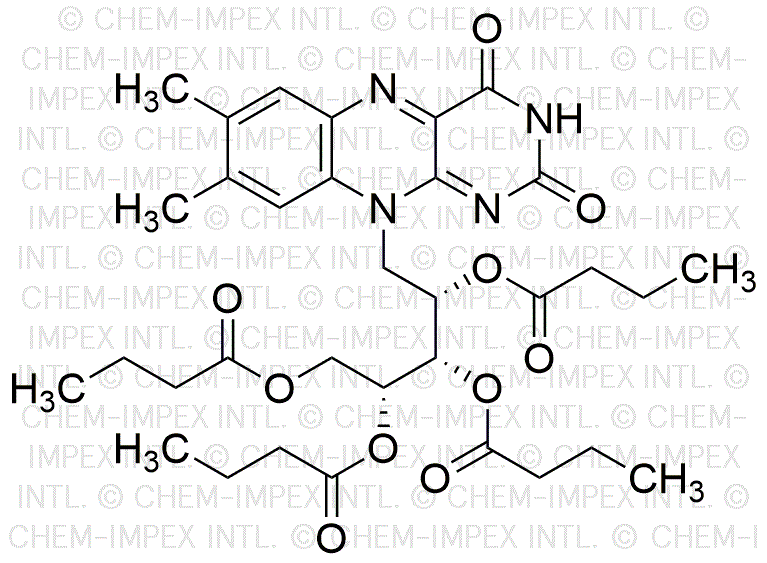Riboflavin tetrabutyrate is widely utilized in research focused on:
- Food Industry: It serves as a food additive and colorant, enhancing the nutritional profile of products while providing a vibrant yellow hue.
- Pharmaceuticals: This compound is used in formulations to improve the bioavailability of riboflavin, which is essential for energy production and metabolism in the body.
- Cosmetics: It is incorporated into skincare products for its antioxidant properties, helping to protect the skin from oxidative stress and improve overall skin health.
- Animal Feed: Riboflavin tetrabutyrate is added to animal feed to ensure livestock receive adequate riboflavin, promoting better growth and health in animals.
- Research Applications: In laboratory settings, it is used as a model compound for studying the metabolism of vitamins and their derivatives, providing insights into nutritional biochemistry.
General Information
Properties
Safety and Regulations
Applications
Riboflavin tetrabutyrate is widely utilized in research focused on:
- Food Industry: It serves as a food additive and colorant, enhancing the nutritional profile of products while providing a vibrant yellow hue.
- Pharmaceuticals: This compound is used in formulations to improve the bioavailability of riboflavin, which is essential for energy production and metabolism in the body.
- Cosmetics: It is incorporated into skincare products for its antioxidant properties, helping to protect the skin from oxidative stress and improve overall skin health.
- Animal Feed: Riboflavin tetrabutyrate is added to animal feed to ensure livestock receive adequate riboflavin, promoting better growth and health in animals.
- Research Applications: In laboratory settings, it is used as a model compound for studying the metabolism of vitamins and their derivatives, providing insights into nutritional biochemistry.
Documents
Safety Data Sheets (SDS)
The SDS provides comprehensive safety information on handling, storage, and disposal of the product.
Product Specification (PS)
The PS provides a comprehensive breakdown of the product’s properties, including chemical composition, physical state, purity, and storage requirements. It also details acceptable quality ranges and the product's intended applications.
Certificates of Analysis (COA)
Search for Certificates of Analysis (COA) by entering the products Lot Number. Lot and Batch Numbers can be found on a product’s label following the words ‘Lot’ or ‘Batch’.
*Catalog Number
*Lot Number
Certificates Of Origin (COO)
This COO confirms the country where the product was manufactured, and also details the materials and components used in it and whether it is derived from natural, synthetic, or other specific sources. This certificate may be required for customs, trade, and regulatory compliance.
*Catalog Number
*Lot Number
Safety Data Sheets (SDS)
The SDS provides comprehensive safety information on handling, storage, and disposal of the product.
DownloadProduct Specification (PS)
The PS provides a comprehensive breakdown of the product’s properties, including chemical composition, physical state, purity, and storage requirements. It also details acceptable quality ranges and the product's intended applications.
DownloadCertificates of Analysis (COA)
Search for Certificates of Analysis (COA) by entering the products Lot Number. Lot and Batch Numbers can be found on a product’s label following the words ‘Lot’ or ‘Batch’.
*Catalog Number
*Lot Number
Certificates Of Origin (COO)
This COO confirms the country where the product was manufactured, and also details the materials and components used in it and whether it is derived from natural, synthetic, or other specific sources. This certificate may be required for customs, trade, and regulatory compliance.


